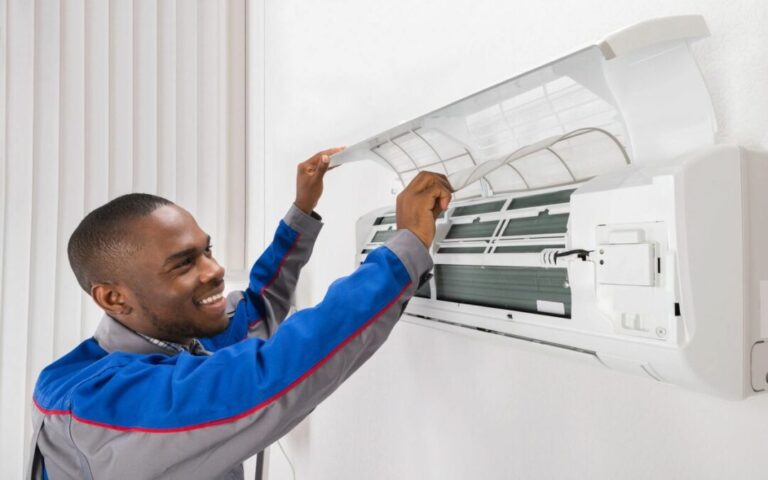So you’re thinking about getting a split air conditioner? Smart move. These systems have gotten super popular, and for good reason. They cool your space without the hassle of ductwork, save energy, and look pretty sleek mounted on your wall.
But here’s the thing. Walking into a store or browsing online, you’ll get hit with a ton of options. Brands you’ve never heard of. Features that sound made up. Numbers and ratings that might as well be hieroglyphics.
I want to break this down for you. No fancy jargon, no sales pitch. Just the seven things you absolutely need to know before you hand over your credit card for a split AC. Trust me, this stuff matters way more than whatever the salesperson is trying to push on you this week.
Important Things to Consider When Choosing a Split Air Conditioner
When you boil it down, there are really seven big factors that make or break your experience with a split air conditioner. Get these right, and you’ll be comfortable for years. Get them wrong, and you’ll be sweating in summer, freezing in winter, or calling repair techs so often they start sending you holiday cards.
Let’s dig into what really matters.
Cooling Capacity (Tonnage)
This one’s huge, maybe the most important thing to get right. Cooling capacity is basically how much cooling power your AC has, and it’s measured in tons (like 1-ton, 1.5-ton, 2-ton).
Here’s what nobody tells you: bigger isn’t always better. You need to match the tonnage to your room size. Getting this wrong is like buying shoes three sizes too big because “hey, more shoe is better, right?”
If your AC is too small for your space, it’ll run constantly, jack up your electric bill, and still leave you sweaty. Your room will feel like a sauna no matter what the thermostat says.
In comparison, a unit that’s too large may cool the room quickly but will leave a damp feeling, defeating the purpose of split system air conditioning. It’s like using a fire hose to fill a drinking glass. The room gets cold fast but feels weirdly clammy because the AC doesn’t run long enough to remove humidity.
So how do you figure out the right size? A good rule of thumb: you need about 20 BTU per square foot of living space. That means a 300 square foot room needs around 6,000 BTU, which is half a ton. But this changes based on ceiling height, insulation, and how sunny your room gets.
My home advice? Get at least 2-3 quotes from pros who actually measure your space. If they just eyeball it and say “yeah, 1.5 ton should do it,” show them the door.
Energy Efficiency (Star Ratings & Inverter Technology)
Let’s talk about your electric bill. Energy efficiency ratings tell you how much cooling you get per watt of electricity. Higher stars mean lower bills.
The star rating system is pretty straightforward – more stars, better efficiency. But the real game-changer here is inverter technology.
Traditional ACs are like light switches – they’re either on full blast or completely off. That constant stopping and starting wastes tons of energy.
Inverter ACs are more like a dimmer switch. They adjust their power based on how much cooling you need. When you first turn it on, it runs at full power to cool the room quickly. Once you hit the target temperature, it throttles back to just maintain it.
This means:
- Your bills can be up to 40% lower
- The temperature stays consistent (no hot and cold cycles)
- The AC runs quieter
- Less wear and tear on the system
Yes, inverter models cost more upfront. But they usually pay for themselves within 2-3 years through lower electric bills. If you plan to use your AC for more than a few hours daily, an inverter model makes financial sense.
Don’t just look at the price tag. Ask about the annual operating cost based on your typical usage. Sometimes spending $200 more upfront saves you $1,000 over five years.
Indoor & Outdoor Unit Placement
The spot where you put your AC units affects everything – cooling efficiency, noise, maintenance, and even how long the system lasts.
For the indoor unit:
- Keep it at least 7 feet off the ground
- Don’t put it directly above where people sit or sleep
- Allow at least 6 inches of space all around it
- Avoid placing it near heat sources like TVs or lamps
- Pick a wall that’s not in direct sunlight
For the outdoor unit:
- Find a shaded spot if possible (but not crowded by bushes)
- Make sure it has at least 12 inches of clearance on all sides
- Mount it on a sturdy, level surface
- Keep it away from bedrooms if you can (it makes noise)
- Make sure water can drain away from it
One mistake people make all the time? Putting the outdoor unit where it blows hot air onto a neighbor’s property value or another AC unit. That hot exhaust air needs somewhere to go.
Another common goof is mounting the indoor unit where it blows directly onto you. Feels great for about 20 minutes, then you’re freezing and reaching for the remote.
The distance between indoor and outdoor units matters too. Most systems come with 15-25 feet of connection lines. Going beyond that can hurt performance and might need extra refrigerant.
Air Quality Features
Your AC doesn’t just cool air – it can clean it too. This matters a ton if you have allergies, pets, or live somewhere with pollution or wildfire smoke.
Basic split ACs have simple dust filters. They catch big particles like pet hair and dust but not much else. These need cleaning every 2-4 weeks.
Better models have multi-stage filtration:
- Pre-filters for dust and hair
- HEPA filters for tiny particles (captures 99.97% of particles as small as 0.3 microns)
- Carbon filters for odors and gases
- Some even have ionizers or UV lights to kill bacteria and viruses
Look for systems with washable filters to save money long-term. Replacement filters can cost $20-50 each, and you might need 3-4 per year.
Some brands advertise plasma clusters, nano-platinum, or other fancy-sounding tech. Cut through the marketing fluff and ask what percentage of particles they actually remove and what particle sizes they target.
If someone in your home has asthma or severe allergies, don’t cheap out here. The air quality features might be more important than the cooling power.
Noise Levels
Nobody talks enough about noise. A loud AC can drive you nuts, especially in bedrooms or home offices.
AC noise levels are measured in decibels (dB). Every 10 dB increase feels twice as loud to your ears.
- 25-30 dB: Whisper quiet, perfect for bedrooms
- 30-40 dB: Library quiet, good for living rooms
- 40-50 dB: Starts getting noticeable, like quiet conversation
- 50+ dB: Too loud for comfort in living spaces
Indoor units are usually quieter than outdoor ones. Some systems have “night mode” or “silent operation” that sacrifices a bit of cooling power for peace and quiet.
Don’t just read the specs – ask to hear the unit running in the showroom, or check out installed units in friends’ homes.
Also, cheap units often get louder over time as components wear. Quality matters here. An AC rated 35 dB when new might hit 45 dB after a year of use if it’s poorly made.
Maintenance & After-Sales Service
This is the part nobody thinks about until something breaks at 11 PM on the hottest night of the year.
A split AC needs regular maintenance – filter cleaning, coil cleaning, refrigerant checks. Skip this and your system dies young. It’s like never changing your car’s oil.
Before buying, ask:
- How big is their service team?
- What’s their average response time for repairs?
- Do they have 24/7 emergency service?
- Will they give you a loaner if parts are backordered?
- How long have they been selling this brand?
Check the warranty details carefully. Some brands offer 5 years on parts but only 1 year on labor. Others might have 10-year warranties but void them if you miss a single annual maintenance visit.
Google the brand + “service problems” or “warranty issues” to see what actual customers say. A long warranty on paper means nothing if the company makes it impossible to actually get service.
And make friends with your installer! Seriously. The people who put in your system know it best, and having a good relationship means faster service when you need it.
Budget & Long-Term Cost
Split ACs range from $700 to $4,500+ installed. That’s a huge range. Why such a big difference?
The upfront price is just the start of the story. The real cost includes:
- Installation (can be 20-40% of the total)
- Electricity usage over 10-15 years
- Maintenance costs
- Repair costs
- How long it actually lasts
A $1,000 system that lasts 5 years costs you $200/year. A $2,000 system that lasts 15 years? Just $133/year. Add in the energy savings from a more efficient unit, and the expensive system might actually be cheaper overall.
Avoid the cheapest models. They’re cheap for a reason – flimsy components, poor efficiency, loud operation. The sweet spot is usually in the middle of the price range.
Ask about financing options too. Many companies offer no-interest payment plans, and the monthly cost might be less than what you’ll save on your electric bill.
Conclusion
Picking a split AC isn’t rocket science, but it does take some homework. Get the cooling capacity right for your space. Don’t skimp on efficiency if you’ll use it regularly. Think about where the units will go. Consider your air quality needs. Check the noise levels. Research the service reputation. And look at the total cost of ownership, not just the price tag.
The right AC makes you forget it’s even there – it just quietly keeps you comfortable year after year. The wrong one becomes that annoying houseguest who costs too much, makes too much noise, and keeps breaking things.
Take your time, ask questions, and don’t let anyone rush you. You’re going to live with this decision for the next decade or more. Make it count.

